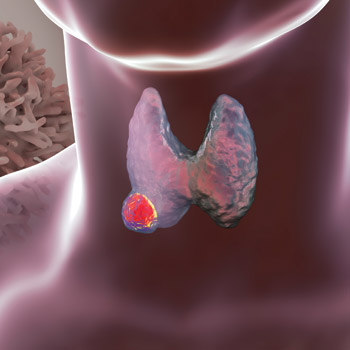Giant-cell arteritis needs prompt action for good outcomes
The differential diagnosis of this condition can be challenging because many conditions can mimic it.
Although is the most common form of vasculitis in adults, its diagnosis is relatively uncommon and can be difficult to make.

“As it is classically described, GCA usually occurs in adults 50 and older and peaks between the ages of 70 to 79,” said ACP Member Sebastian E. Sattui, MD, MS, a senior rheumatology and vasculitis fellow at the Hospital for Special Surgery in New York City.
GCA most commonly affects the arteries of the head, specifically the side temporal arteries. Patients may present with constitutional symptoms like fever, weight loss, fatigue, or night sweats, Dr. Sattui explained, but also ischemic symptoms caused by impaired blood flow such as headaches, scalp tenderness, or jaw claudication.
“A lot of the descriptions of the disease say that it is most commonly reported in White people, but there are reports in other races as well,” Dr. Sattui said.
A condition with many mimics
The differential diagnosis of GCA can be challenging because many conditions can mimic it, said Tanaz Kermani, MD, MS, FACP, associate clinical professor of medicine and the director of the Vasculitis Program at University of California, Los Angeles. These include other causes of headaches, infections, malignancies, other inflammatory conditions including vasculitis, and noninflammatory conditions like atherosclerosis. Furthermore, laboratory tests in patients with GCA are nonspecific and include elevated markers of inflammation that can be seen in other conditions.
The wide variety of symptoms can lead to delay in diagnosis, Dr. Sattui said. A meta-analysis published in BMC Medicine in 2017 used data from 16 studies of GCA to evaluate the extent of diagnostic delay. The average delay from symptom onset to GCA diagnosis was 9 weeks; however, there was less delay, about 7.7 weeks, in patients who presented with cranial symptoms and more delay, about 17.6 weeks, in those who presented with noncranial symptoms.
Such delays can be costly, according to Kornelis van der Geest, MD, PhD, a rheumatologist at the University Medical Center Groningen in the Netherlands. “About 25% of patients may experience irreversible blindness early in the disease, often due to anterior ischemic optic neuropathy,” said Dr. van der Geest, who was the lead author on a recent systematic review and meta-analysis in JAMA Internal Medicine that examined the diagnostic accuracy of symptoms, physical signs, and lab tests for the condition. “The blindness starts in one eye and, if left untreated, the other eye will likely follow within a few days or weeks.”
Of importance, he said, prompt diagnostic evaluation and treatment of patients with suspected GCA in fast-track GCA clinics have lowered blindness rates to approximately 5%.
Dr. van der Geest noted that in general, clinicians will have to do additional testing when GCA is suspected because presentation of symptoms, physical exam, and blood tests are not fully sensitive and not 100% specific.
Guidelines and workup
The American College of Rheumatology is currently working on updated guidelines for GCA diagnosis and management, Dr. Sattui said, but evaluation of any patient with suspected GCA should include a comprehensive history and physical examination, with focused vascular examination. The latter should involve evaluation of the temporal arteries, radial and pedal pulses discrepancy, and auscultation for large-vessel bruits, Dr. Kermani said.
Polymyalgia rheumatica (PMR), another inflammatory condition, is closely associated with GCA and should prompt heightened suspicion. Patients can experience pain (especially in the shoulders and hips), fatigue, and sometimes fevers, said Robert Centor, MD, MACP, former Chair of ACP's Board of Regents and professor emeritus of medicine at the University of Alabama at Birmingham.
PMR is estimated to occur in about half of patients with GCA. Estimates of the percentage of patients with PMR who experience GCA range from 5% to 30%, depending on the study.
“PMR is more common than GCA, and not all patients with PMR will have GCA,” Dr. Centor said. “When I see a patient with PMR, though, I also look for signs of GCA.” He said he asks patients with PMR about some of the most obvious GCA symptoms, such as scalp tenderness with headaches, visual symptoms, limb or jaw claudication, or tenderness over the temporal artery.
Initial diagnostic tests in a patient with suspected GCA look for markers of inflammation with sedimentation rate and C-reactive protein, Dr. Kermani said. If they are abnormal, additional diagnostic testing is pursued. However, even if they are negative, additional diagnostic testing should still be done if clinical suspicion is moderate to high. In the United States, she said, temporal artery biopsy is still the most commonly used test to confirm a GCA diagnosis. However, she noted that inflammation in GCA may be segmental and result in false-negative results.
Platelet counts also are important, said Dr. van der Geest. “Although it is not widely known among clinicians, the presence of elevated platelet counts increases the likelihood that a patient has GCA,” he said.
In Europe, Dr. van der Geest said that vascular ultrasonography has become the first-line test for diagnosis of GCA. “We examine the temporal and axillary arteries by ultrasound, usually on the day of referral, for the presence of the ‘halo sign,’ which reflects arterial wall swelling caused by the inflammation,” Dr. van der Geest said. “In the majority of patients, that is enough to rule in or rule out disease. Only in a minority of patients, additional testing by temporal artery biopsy or another imaging test is needed as recommended by [European League Against Rheumatism] recommendations and the [British Society for Rheumatology] guidelines.”
In the 2016 TABUL study, researchers compared temporal artery biopsy with ultrasound in 281 patients with newly suspected GCA after introducing an ultrasound training program. Ultrasound was better at identifying patients who had GCA, but biopsy had a superior specificity.
More recently, given the recognition that the inflammation in GCA extends beyond the temporal arteries, large-vessel imaging with computed tomography angiography (CTA), magnetic resonance angiography (MRA), and positron emission tomography (PET) are also used to evaluate for vasculitis, Dr. Kermani said. “PET is probably the most sensitive for untreated GCA, but sensitivity drops after initiation of treatment,” she noted. “CTA and MRA can show findings of vasculitis in the vessel walls of the aorta and branches in addition to evaluation for abnormalities like stenosis, occlusions, and aneurysms, which can also be seen in large-vessel vasculitis.”
Knowing which test or combination of tests will work best requires an understanding of the underlying condition, she added.
“A lack of gold standard for testing is partly due to recognition of the heterogeneity in presentation and areas affected with vasculitis within GCA, decreased sensitivity of our diagnostic testing from initiation of treatment, and in the case of temporal artery biopsy, due to the segmental nature of vasculitis,” Dr. Kermani said. “Treatment should never be delayed, though. All patients with suspected GCA should be started on glucocorticoids while awaiting additional diagnostic testing to prevent visual loss.”
Dr. Sattui agreed. Patients with a high suspicion of GCA, especially those with threatened visual loss, should start treatment as soon as possible, with a biopsy scheduled shortly thereafter.
When to refer
“GCA is a very difficult diagnosis, and general practitioners may only see a few cases per year, if any at all,” Dr. van der Geest said. General practitioners should look out for patients with a constellation of symptoms. For instance, isolated headache is usually not caused by GCA, but if it occurs with visual symptoms or raised inflammatory markers, it should prompt suspicion of GCA.
“If primary care physicians are in doubt, they should refer the patient or contact a specialist given the risk of acute blindness in GCA,” Dr. van der Geest said.
In addition to steroids, the treatment of GCA has recently expanded to include immunosuppressive drugs, like the IL-6 receptor antibody tocilizumab, which adds another layer of complexity to the condition's management, Dr. Sattui said. “Specialists are best positioned to know who is a good candidate for tocilizumab,” he said.
Dr. Kermani agreed, adding that given the recent information regarding large-vessel manifestations of GCA and its systemic nature, rheumatologists can follow these patients over time, including monitoring for complications like aortic aneurysms. “Patients are followed at regular intervals with laboratory and clinical evaluations as medications are tapered to assess disease activity,” she said. “The subset with large-vessel manifestations also may need serial imaging to monitor for complications of the disease and to assess disease activity.”
Good communication with primary care is essential throughout the process, Dr. Sattui stressed. “Patients who are on high doses of steroids as part of their treatment may have side effects such as diabetes, hypertension, or fractures (osteoporosis),” he said. “This requires close comanagement between primary care and a rheumatologist.”





